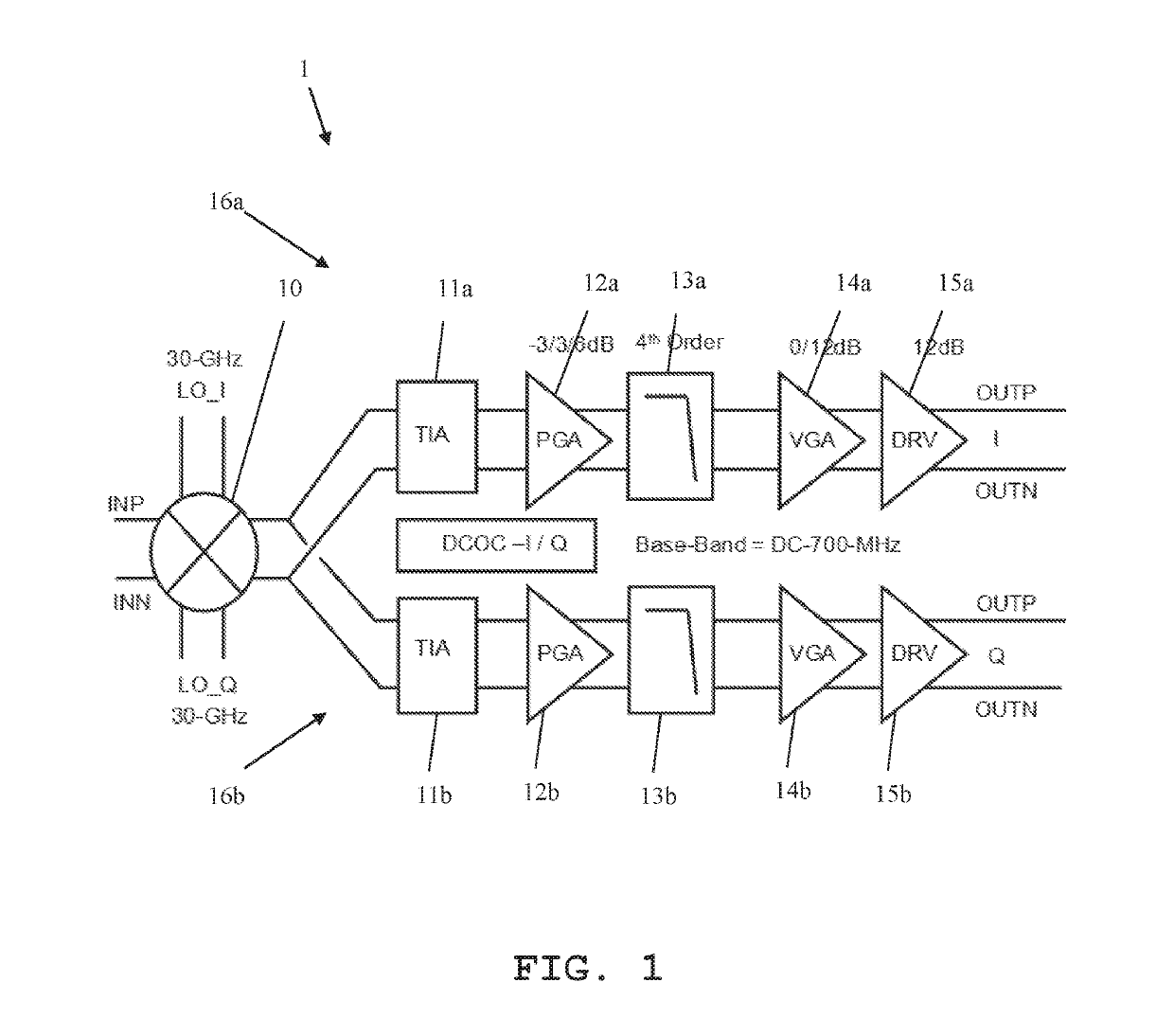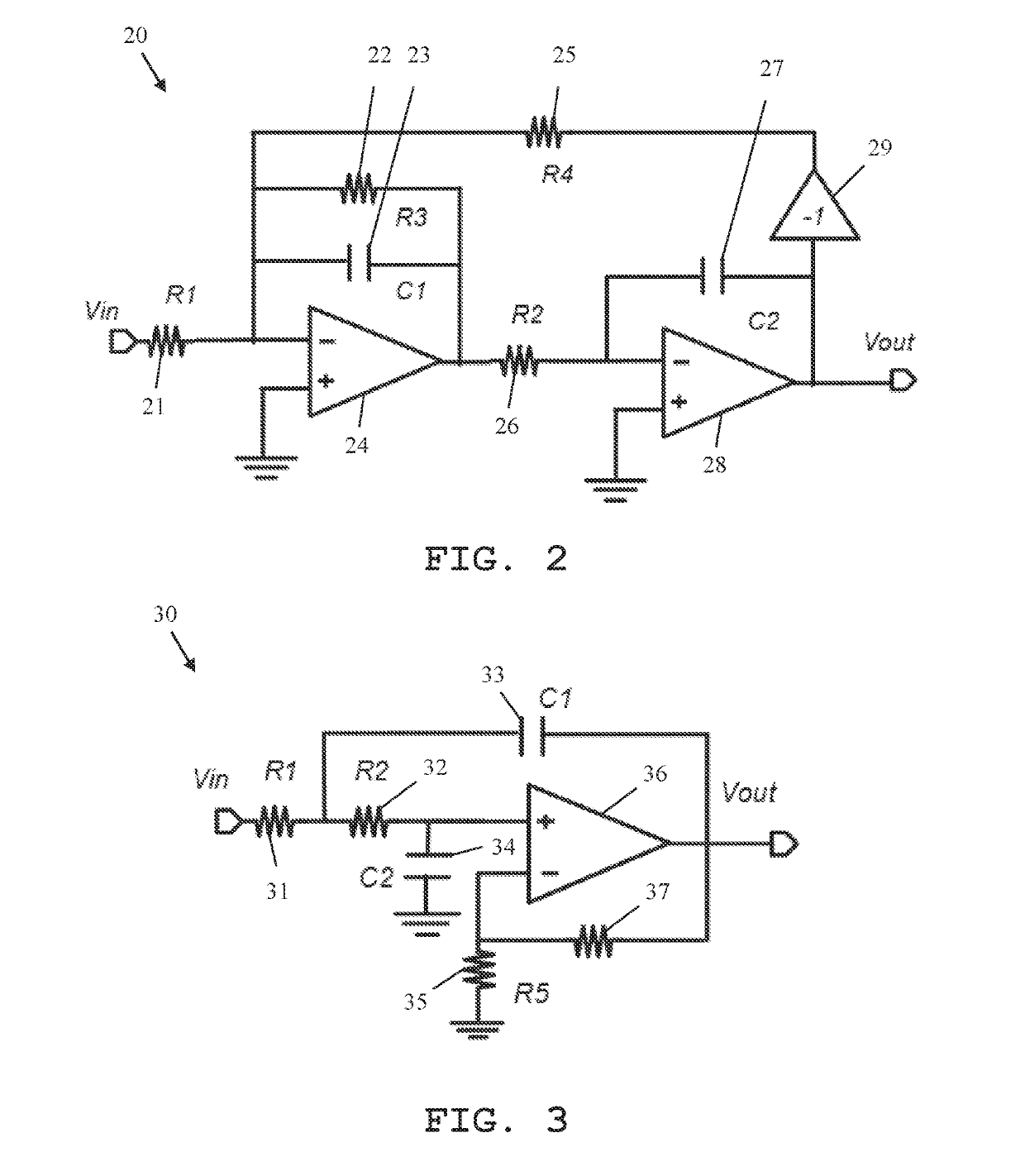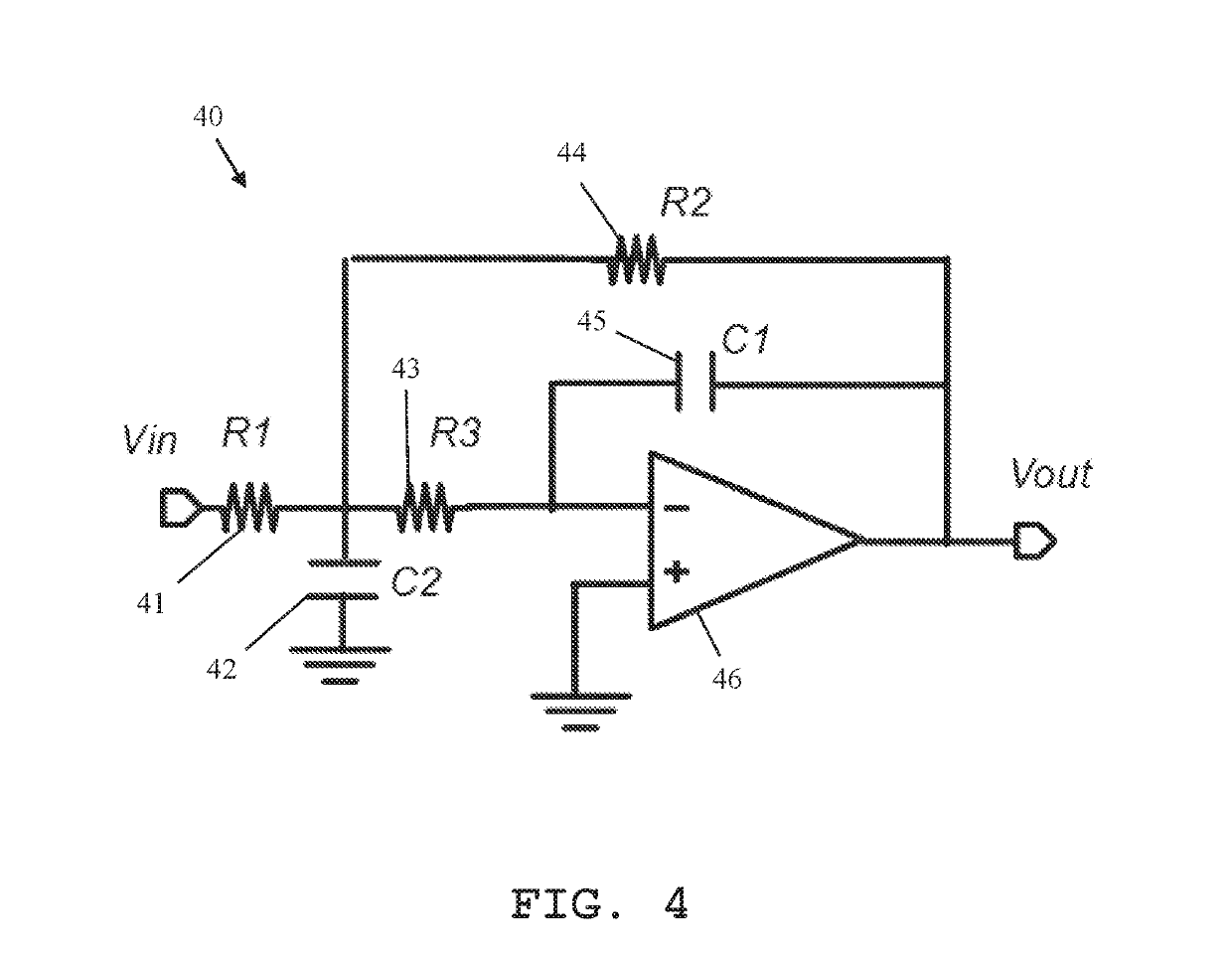Filter Circuit with Programmable Gain and Frequency Response
a filter circuit and frequency response technology, applied in the direction of filters, tunable filters, gated amplifiers, etc., can solve the problems of large power consumption, difficult to implement simultaneous and difficult to implement gain control and frequency tuning. , to achieve the effect of simple implementation of the output converter, simple controllability of the gain, and easy implementation of the proportionality constan
- Summary
- Abstract
- Description
- Claims
- Application Information
AI Technical Summary
Benefits of technology
Problems solved by technology
Method used
Image
Examples
Embodiment Construction
[0048]First, the underlying problem and exemplary filter structures and filter circuits have been described along FIG. 1-FIG. 6. In the following, along FIG. 7, a general construction of a filter circuit according to the first aspect of the disclosure is described. Along FIG. 8-FIG. 14, different embodiments of the filter circuit of the first aspect of the disclosure are shown. Similar entities and reference numbers in different figures have been partially omitted.
[0049]In FIG. 7, a filter circuit 70 according to the first aspect of the disclosure is shown. The filter circuit 70 comprises a filter 72 and a current mode programmable gain amplifier 74. The filter 72 is connected to the current mode programmable gain amplifier 74. The filter 72 moreover comprises a current extraction element 73.
[0050]An input signal VF_IN+, VF_IN− is provided to the filter circuit 70, especially to the filter 72. A filtering of the input signal 71 is performed by the filter 72. The current extraction e...
PUM
 Login to View More
Login to View More Abstract
Description
Claims
Application Information
 Login to View More
Login to View More - R&D
- Intellectual Property
- Life Sciences
- Materials
- Tech Scout
- Unparalleled Data Quality
- Higher Quality Content
- 60% Fewer Hallucinations
Browse by: Latest US Patents, China's latest patents, Technical Efficacy Thesaurus, Application Domain, Technology Topic, Popular Technical Reports.
© 2025 PatSnap. All rights reserved.Legal|Privacy policy|Modern Slavery Act Transparency Statement|Sitemap|About US| Contact US: help@patsnap.com



